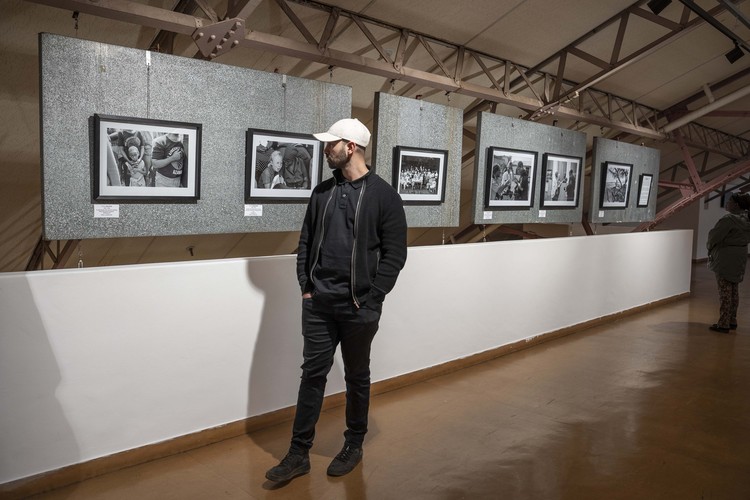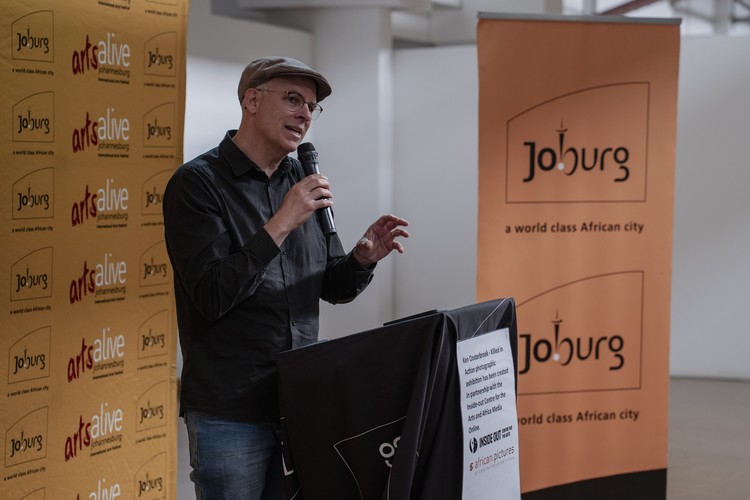Exhibition honours work of late Bang Bang Club photojournalist
Ken Oosterbroek’s “photographs will bring awareness to the importance of photography in the creation of our collective historical record” says curator
The exhibition: Ken Oosterbroek Killed in Action is up at the Museum Africa in Newtown, until September. It explores the life and legacy of Oosterbroek who was part of a group of photojournalists nicknamed the “Bang Bang Club”. Photos: Ihsaan Haffejee
A new exhibition highlighting the work of the late photojournalist Ken Oosterbroek has opened at Museum Africa in Newtown, Johannesburg.
The exhibition, Ken Oosterbroek Killed in Action, explores the life and legacy of Oosterbroek who was part of a group of photojournalists, Kevin Carter, Greg Marinovich and João Silva nicknamed the “Bang Bang Club”. They documented South Africa’s transition from apartheid to democracy in the late 1980’s and early 1990’s.
Oosterbroek was named South African press photographer of the year three times in 1989, 1991 and 1994. He also won 2nd prize in the 1993 World Press Photo awards in the stories and general news category.
On 18 April 1994, just nine days before South Africa’s historic first democratic election, Oosterbroek was shot and killed while on assignment in Thokoza, east of Johannesburg.
Dudu Madonsela, head curator at the Ben Susan Museum of Photography who curated this exhibition, said: “We wanted this exhibition to coincide with the 30th anniversary of South Africa’s democracy as well as to honour Ken who lost his life documenting an important part of our history 30 years ago.”
David Larsen, founder and director of African Media Online, one of the partners of the exhibition.
She said the exhibition goes beyond Oosterbroek’s work during his time with the “Bang Bang Club” and shows a range of images of his skills and talents as a photojournalist. This ranges from work detailing the violence of the early 1990s but also more tender images documenting people’s everyday life.
“Ken’s photographs will bring awareness to the importance of photography in the creation of our collective historical record and show the impact that photography can have in enhancing our understanding of the world,” said Madonsela.
Belinda Hlaka, the curator of Workers History at the nearby Workers Museum was walking through the exhibition recently when she recognised herself in a black and white photo taken by Oosterbroek in the township of Kagiso. The image is of a group of women marching through the streets during a protest. Towards the back of the image is a young Hlaka with her mouth open as she shouts out in defiance.
Belinda Hlaka stands next to a photograph taken by Ken Oosterbroek where she appears with a group of women staging a protest against political violence in the township of Kagiso in the 1990s.
“Looking back at this picture brings back so many memories. I was still at school, and it was during the time that the Inkatha Freedom Party (IFP) was busy in our township. Women in Kagiso said enough is enough, and we went to protest against the violence,” said Hlaka.
She said she is so grateful someone captured that moment, and that years later it serves as a reminder of how far we have come as a country.
Ken Oosterbroek: Killed in Action photographic exhibition can be viewed at the Ben Susan Museum of Photography on the top floor of Museum Africa in Newtown, until September. Access is free and open to the public.
The exhibition is free to the public.
Support independent journalism
Donate using Payfast

Don't miss out on the latest news
We respect your privacy, and promise we won't spam you.
Next: Butterworth families evicted by chiefs in 2011 are still waiting for promised houses
Previous: City of Cape Town buys occupied Marikana land seven years after landmark ruling
© 2024 GroundUp. This article is licensed under a Creative Commons Attribution-NoDerivatives 4.0 International License.
You may republish this article, so long as you credit the authors and GroundUp, and do not change the text. Please include a link back to the original article.
We put an invisible pixel in the article so that we can count traffic to republishers. All analytics tools are solely on our servers. We do not give our logs to any third party. Logs are deleted after two weeks. We do not use any IP address identifying information except to count regional traffic. We are solely interested in counting hits, not tracking users. If you republish, please do not delete the invisible pixel.




